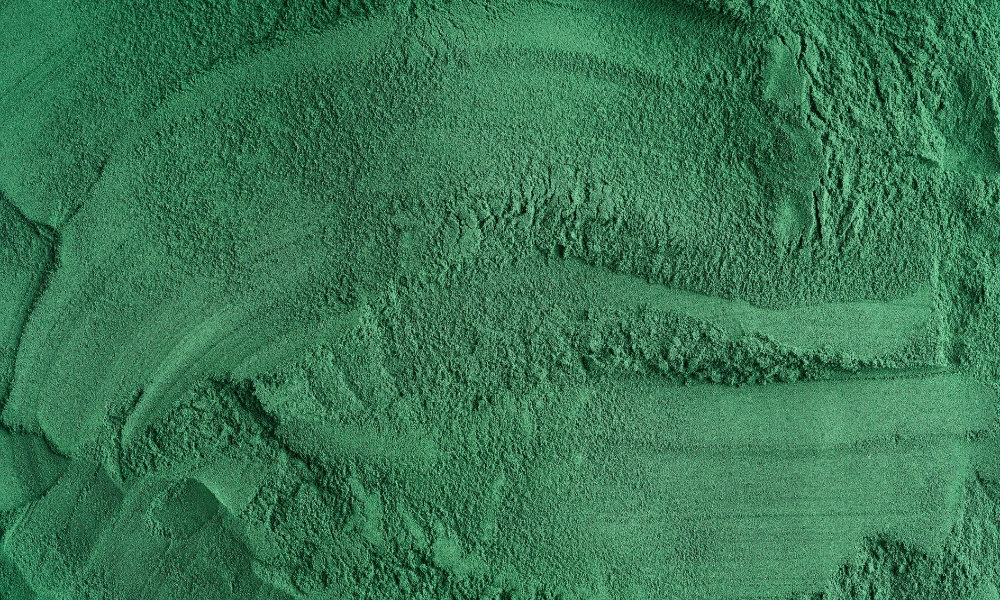Made with under the sun daily.
Made with under the sun daily.
Home » Frequently asked questions (FAQ)
A. No, there isn’t.
A. Usually, 1-3 days, depending on your location. We harvest every week and ship that same week using a courier. You can find the delivery schedule on the Fresh Spirulina Deliveries page.
A. No, you don’t. Our delivery service is 100% guaranteed, so you will always receive your order frozen! We have tested and sent parcels across Australia (some examples include Sydney, Cairns, inland NSW, Perth, Noosa Heads, Northern Rivers etc… delivery time was always between 1 – 3 days). In some cases, because we track the package, we can tell that it was left while the owner wasn’t at home, the package in such cases was left on the doorstep (a particular hot weather case was Cairns). If you are still unsure, you can always communicate with us for a better delivery date for you or provide us with a better address (like work, for example). Alternatively, you can always schedule a new shipping day with us.
A. A common way to eat freshly frozen spirulina is simply to add it to your glass of water, juice or a blender to make a smoothie. Add it as an ice cube as another ingredient. The spirulina will dissolve and blend in.
A. The best way to consume Freshly Frozen Spirulina is by placing a served content into a glass of water, glass of juice or a blender to make a smoothie (treat it as an ice cube so it will dissolve in your glass or blend as another ingredient in your smoothie). Smoothie can be as simple as an apple or pear with water and freshly frozen spirulina. Some people will scull the spirulina off the serving pod.
A. Always keep Freshly Frozen Spirulina in the freezer at (-10) – (-18°C). The spirulina is good for 6 – 12 months from harvest date.
A. Yes, you can. The freshly frozen spirulina you purchased is frozen. If, for example, you received the package ordered online, the spirulina has already been frozen for you. Unlike meat, thawed spirulina can be re-frozen without any problems.
A. No, it doesn’t.
A. the spirulina is good for 6 -12 months in the freezer. It will spoil like any other fresh vegetable if defrosted and placed in the fridge. Spirulina is good in the refrigerator for 7- 10 days. You’ll know that the spirulina is spoiled if it starts smelling like a rotten egg. We do not recommend consuming Spirulina if it has been unrefrigerated for more than 4 hours. Spirulina can be re-frozen.
A. Yes, you can. Using a microwave to cook spirulina is fine and safe; however, it is not recommended. Heating spirulina will reduce its nutritional value. Heating will destroy, for example, the proteins, the essential amino acids and enzymes. It is recommended to add spirulina at the serving stage.
A. Yes, you can. You can cook Spirulina, but, as with all vegetables, exposing fresh Spirulina to prolonged heat will reduce its bioavailability and the amount of available nutrition. Prolong heating will destroy biological elements such as protein, amino acids, phytonutrients, pigments, and lots of the good stuff that you are getting the spirulina in the first place. To maintain an optimal nutrition profile, adding fresh Spirulina to food is recommended just before the serving stage.
A. The blue colour is called Phycocyanin. Phycocyanin is a phytonutrient (a protein pigment) its natural light is blue and is present in Spirulina. Phycocyanin is the responsible component of the blue colour of the blue-green colour of the spirulina microalgae. Phycocyanin is the blue gold of spirulina. It has proven effective in combating many common and advanced health problems. It’s the most powerful and potent antioxidant.
A. The spirulina is not black, what you see is the very strong blue colour of the phycocyanin (mentioned in the previous faq) on top of the green colour (chlorophyll). After harvesting, the spirulina is put under a press for water extraction, then packed and placed in a freezer. During the freezing stage, the leftover water within the cells is crystallising and puncturing the spirulina’s cell wall. When the spirulina is defrosted, the phycocyanin is simply leaking out, and you may think that the spirulina has turned dark blue (‘black’).
Take your spirulina under brighter light; you will see it is still beautifully green and as healthy as ever. Your spirulina is still good to eat. There is nothing wrong with it. If you touch it and then look at your finger, you’ll see the beautiful blue colour of the phycocyanin on your finger.
The only time spirulina is not good to eat is when it was sitting in the fridge for over 7 days, left on the kitchen bench for more than 4 hours, or started to smell (like a rotten egg).
A. Yes, it is. Freshly frozen spirulina and dried Spirulina, for that matter, are very good for vegans. The freshly frozen spirulina’s high vegetable protein content (65 – 71%) is very helpful for vegans to maintain a balanced diet.
A. The drying (heat exposure), powdering (machine processing), compressing to tablet or encapsulating processes degrade the vitamins, minerals, protein phytonutrients and antioxidants, making freshly frozen spirulina superior in nutritious to other forms of Spirulina.
Certain Spirulina powders and supplements are reported to have a strong taste and smell compared with fresh Spirulina which is virtually tasteless and odourless.
A. Freshly frozen spirulina is tasteless and odourless. One of the advantages of fresh frozen Spirulina is the lack of smell and flavour. This unique characteristic gives you greater creative flexibility when consuming. You can add your freshly-frozen spirulina to any drink, yet you will not taste or smell it. In one fresh spirulina serving, there is 3 times more spirulina than on a regular teaspoon, yet no smell or flavour is detected.
A. This is the right spot to mention that spirulina is not medicine or a drug but food and should be treated like that.
Each pod/serve is 20g of pure spirulina, and most people find that 20g is enough for them, however, if you put 1 serve of freshly frozen spirulina in your drink and start drinking and find that it’s too much for you, simply place the rest it in the fridge for later or for the next day or share with another person.
A. Freshly frozen spirulina offers up to 71 per cent protein consisting of all essential amino acids that the body does not synthesise.
A. Freshly frozen spirulina is packed with nutrients and will ‘fill’ your banks. The result is that you will feel full and eat in a more organised manner and in smaller quantities. It will take over your eating patterns. Eating Spirulina as part of a balanced diet and exercise can help with weight loss.
A. According to the Food and Agriculture Organization of the United Nations (FAO) the vitamin complex B12 is found in spirulina and is available for humans for absorption.
On the contrary, the United States government’s Department of Agriculture argues that the same vitamin is a pseudo-element and, therefore, unusable for the human body.
(The prefix pseudo is used to mark something that superficially appears to be (or behaves like))
Genesis Algae South East Laboratory stands by the findings of the latter.
FAO Fisheries and Aquaculture Circular No. 1034
A REVIEW ON CULTURE, PRODUCTION AND USE OF SPIRULINA AS FOOD FOR HUMANS AND FEEDS FOR
DOMESTIC ANIMALS AND FISH
Source:
A REVIEW ON CULTURE, PRODUCTION AND USE OF SPIRULINA AS FOOD FOR HUMANS AND FEEDS FOR DOMESTIC ANIMALS AND FISH
Food and Agriculture Organization of the United Nations. N.p., 2017. Web. 26 Mar. 2017.
A. Yes, Spirulina is safe for everyone to consume. Recommended daily consumption ranges between 10-20gr per day of freshly frozen spirulina. Consult with your doctor or nutritionist to determine how much is right for you.
A. Allergic reactions to Spirulina are extremely rare, but if you are concerned that you might be having an adverse reaction to Spirulina, stop taking it and consult your doctor immediately.
Phenylketonuria patients are forbidden from taking spirulina. The product may contain Phenylalanine.
Pregnant women, children and those taking prescription medications consult a physician or qualified therapist before using.
A. Yes. The Spirulina farm is located within a certified organic farm. Part of the compulsory testing for that certificate is for the presence of heavy metals. Furthermore, the nutrients used to make the cultivation medium are all food-grade some of them are purchased at the supermarket isles.
Have more questions? You can contact us here.

Founded in Southeast QLD and located on Certified Organic farmland, we are an Australian-made Fresh Spirulina commercial farm. We are subject to the Australia New Zealand Food Standards Code and produce fresh Spirulina using food-grade nutrients only, pay attention to the freshness and health of our spirulina.


Would you like to be notified when we start?



Thanks! You're on the list.
It's safe to close this popup now.